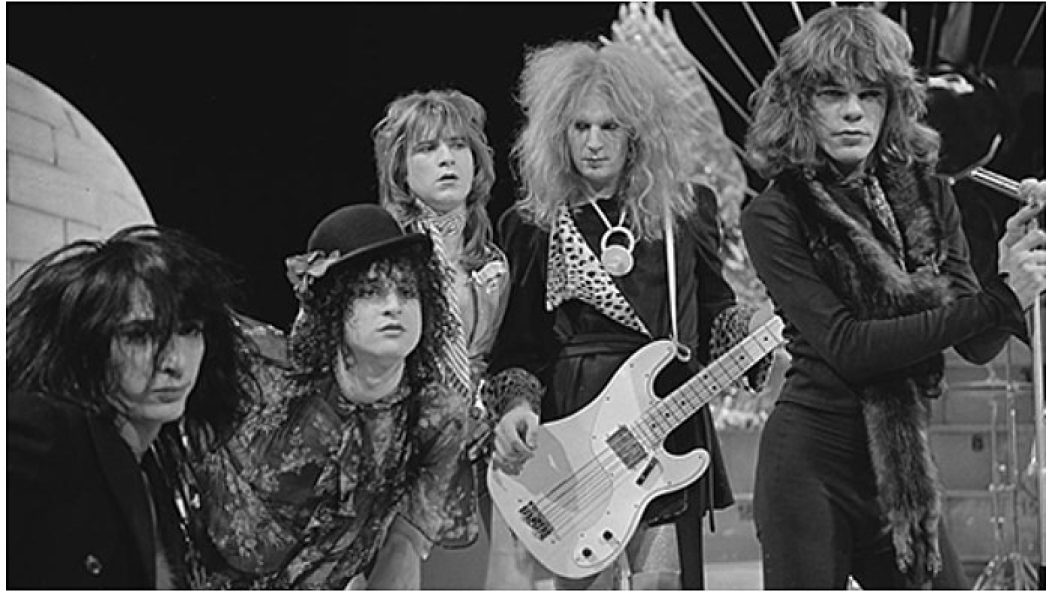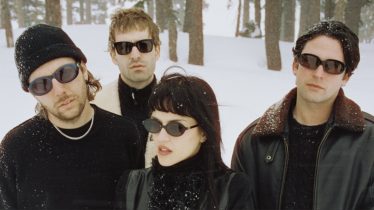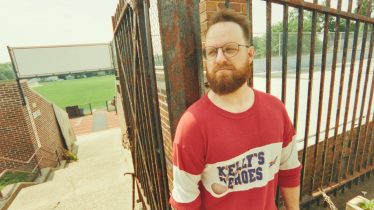
New York Dolls guitarist Sylvain Sylvain dies at age 69
Sylvain Sylvain Mizrahi—born in Cairo, Egypt on Valentine’s Day, 1951—died Wednesday, losing a battle with cancer. He was 69. You knew him as Sylvain Sylvain, or Syl Sylvain, the corkscrew-haired guitarist bopping at stage right in vintage videos of punk-rock architects the New York Dolls.
“As most of you know, Sylvain battled cancer for the past two-and-a-half years,” wrote his wife, Wanda O’Kelley Mizrahi, in a statement posted on his Facebook page. “Though he fought it valiantly, yesterday he passed away from this disease. While we grieve his loss, we know that he is finally at peace and out of pain. Please crank up his music, light a candle, say a prayer and let’s send this beautiful doll on his way.”
Read more: 10 albums from the ’90s that need to be listened to front to back
The Dolls’ two Mercury albums, 1973’s New York Dolls and 1974’s Too Much Too Soon, sat alongside the works of the Velvet Underground, the Stooges and MC5 as the dog whistles that roused first-generation punk rock into action. Consider the cultural context into which the Dolls came strutting in 1973: James Taylor is topping the charts, and Richard Nixon is in the White House, as rock bands too stoned to add the “‘n’ roll” to the music’s name played interminable guitar and drum solos to packed arenas. What happened to the flash and excitement of Little Richard?
“Basically, what we wanted out of music was something simple, powerful and sexy, topped with a hook that would just drive you crazy,” Sylvain told this writer in a 1997 interview that ran in a New York Dolls oral history for Guitar World magazine eight years later, as the band played a string of reunion shows. “The Dolls’ music was mostly derived from ripping off the Rolling Stones and Eddie Cochran. We didn’t invent [the power chord], but we perfected it, and it became the punk sound. Instead of holding all six strings, you’re holding only two. But when you hit it hard and you’ve got your amp up loud, that’s what gives you the power. I showed that to Johnny [Thunders, the band’s lead guitarist], and I swear to God, he took that to the hilt. And that’s how we came up with every other song. ‘Chatterbox’ and the beginning of ‘Human Being’ were all power chords. It gave Johnny a brand-new invention. Of course, Marc Bolan [of T. Rex] used it and so did James Williamson from the Stooges.”
“The New York Dolls were the first sign that the ’60s were over,” Cyrinda Foxe, the New York scenester and Warhol superstar who became Dolls singer David Johansen’s girlfriend, said elsewhere in that Guitar World feature. “The Dolls were wild-and-free Lower East Side New York. They were really funky kids, and their sound was the beginning of punk rock. They didn’t care if the notes were in the right place; it sounded good, it felt good and the kids liked it.”
And if Young Manhattan, circa 1973, responded to the Dolls’ loud, violent mashup of early Stones, ’50s rock ’n’ roll, and early ’60s girl groups a la the Shangri-Las, mid-America could hardly be bothered. Blame it on their penchant for donning seemingly every item in a Goodwill women’s department and dunking their faces in an entire Max Factor counter before walking onstage. That look was exaggerated cartoonishly for their debut album’s cover. Johnny Thunders alone resembled Married With Children character Peg Bundy’s older sister. Suburban burnout kids in the Midwest saw the record in department stores and had their homophobia tweaked savagely.
Sylvain, who orchestrated that infamous sleeve, smirked that it did broadcast the wrong message. He told this writer the band wore makeup “to look better so we could meet more girls.”
For their trouble, the Dolls topped both the Best and Worst Band Of 1973 in Creem magazine’s reader’s poll that year. And when Bob Harris, the ex-cop hosting British rock TV showcase The Old Grey Whistle Test, tut-tutted and pronounced them “mock rock” following a lip-sync performance of “Jet Boy”? Young Brits such as Joe Strummer and Steve Jones saw their future.
Sylvain took the blame for much of it. He claimed to have taught Thunders “some blues riffs, a couple of three-chord progressions and power chords.” The name came to him on break from working at a New York clothing store called Different Drummer, seeing a business called the New York Doll Hospital at 787 Lexington Ave. He came back from a 1971 business trip to Europe—on behalf of the clothing concern he and original Dolls drummer Billy Murcia ran, Truth and Soul—and found Thunders, Murcia and bassist Arthur Kane rehearsing under the name he’d devised. Singing was a guy Syl’s friend Rodrigo Solomon introduced to him, David Johansen.
Following the acrimonious exit of Thunders and second drummer Jerry Nolan in 1975, Sylvain and Johansen kept the Dolls name alive with various lineups until 1977. Death rattle Dolls manager Malcolm McLaren took Sylvain’s white, pinup-stickered Gibson Les Paul Custom back to England with him. He would hand the guitar to Steve Jones, to play in the band McLaren now managed, the Sex Pistols. According to Syl’s 2018 memoir—There’s No Bones In Ice Cream, co-written with former Alternative Press contributor Dave Thompson—they were to be his band. McLaren would send him a plane ticket. Sylvain received a seven-page letter, talking about this band he was to join, sending photos and introducing him to the members, such as Johnny Rotten: “He can’t sing, but he’s definitely better than Johansen.”
“I’m still waiting for the plane ticket,” Sylvain smirked in his book, published eight years after McLaren’s death, “but I know Malcolm will come through with it one day.”
There followed two years as the linchpin in Johansen’s solo band, simultaneously forming a punkier band of his own called the Criminals. A two-album RCA deal in 1979 yielded a pair of highly listenable, ’50s-influenced solo albums that sold modestly. He played some dates with Thunders and Nolan in the early ’80s, worked on solo material, drove cabs in New York City and played a residency reunited with Nolan under the name the Ugly Americans at the Continental off St. Mark’s Place late in the decade. He was living in Atlanta when Morrissey convinced Johansen and Kane to reunite with Sylvain as the New York Dolls for the 2004 Meltdown festival the ex-Smiths singer curated. The singer and guitarist kept a new Dolls lineup active after Kane’s death weeks later, releasing three albums and playing countless tours before dissolving for the final time in 2011. In his later years, Sylvain did the band the Batusis with ex- Dead Boys guitarist Cheetah Chrome and wrote the memoir with Thompson. He announced his cancer via Facebook shortly after completing a solo acoustic tour to promote the book. He died in Nashville, where he made his home with wife Wanda in 2015. She told Rolling Stone he will be buried in New York City.
“They might have taken some cues from the Stooges, but who they really wanted to be was an American garage band Rolling Stones,” influential rock critic Lester Bangs wrote of the New York Dolls in his 1980 biography of Blondie. “And that’s exactly who they were. Everything about them was pure outrage. And too live for the time—‘72-3-4 mostly. They set New York on fire, but the rest of the country wasn’t ready for it.”
“My best friend for so many years,” Johansen wrote—the last New York Doll standing—on his Instagram this morning. “I can still remember the first time I saw him bop into the rehearsal space/bicycle shop with his carpetbag and guitar straight from the plane after having been deported from Amsterdam, I instantly loved him. I’m gonna miss you old pal. I’ll keep the home fires burning. Au revoir Syl mon vieux copain. February 14, 1951 /January 13, 2021.”




